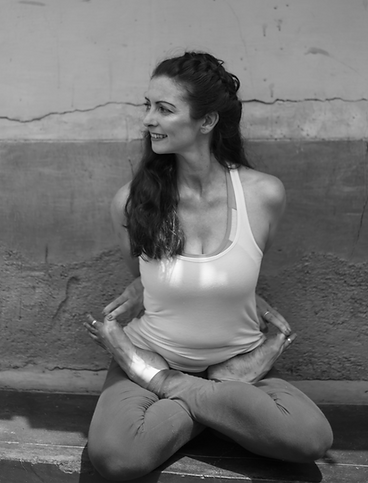What is Vinyāsa Krama Yoga?
– also known as VKM

Vinyāsa Krama Mandiram Yoga (VKM) is a system developed by long-time yoga practitioner and teacher Matthew Sweeney, drawing on over three decades of deep study and experience—particularly within the Ashtanga Vinyasa tradition.
Having practiced and taught Ashtanga extensively, Matthew developed VKM as a way to offer practitioners a more adaptable and sustainable approach, while still honoring the essence of vinyāsa: breath-led movement, internal focus, and intelligent progression.
VKM features a collection of carefully structured asana series, each thoughtfully designed to suit different physical conditions, levels of energy, and stages of life. While each sequence follows an intentional flow, the system as a whole provides greater variety, alternative pathways, and accessible modifications, allowing practitioners to engage with a form of vinyāsa yoga that is both consistent and responsive to individual needs.
Central to the VKM approach is the use of ujjāyī breathing to link breath and movement, cultivating presence and fluidity. The system also places dedicated emphasis on pranayāma, meditation, and the integration of yogic philosophy, offering a holistic path for both physical and inner development.
Rooted in tradition but shaped by lived experience, VKM is a thoughtful and evolving practice that supports long-term engagement with yoga in a meaningful, sustainable way.

Asana - Physical Practice
This approach to asana (physical postures) emphasises movement guided by ujjayi breath. It is traditionally taught through a self-practice model, supported by led classes. In this way, students are encouraged to move with their own breath, learning each sequence gradually, over time and in stages.
There are four foundational sequences within this method:
-
Chandra Krama (Moon Sequence)
-
Marjara Krama (Lion Cub)
-
Simha Krama (Lion)
-
Atapa Krama (Sunshine)
Each series is designed to support physical, energetic, and emotional balance, and can be tailored to the needs of individual students. The asana practice is further supported by prāṇāyāma (breath regulation techniques) and Kevala Kumbhaka — a breath retention practice that serves as a gateway to meditation, bridging the space between breathwork and stillness.
The central technique in the Vinyāsa Krama system is breathing in a 1–2–3 rhythm, followed by a gentle pause (stambha). This breath-led structure cultivates grace and flow in the physical practice while developing inner focus and calm.
The Vinyāsa Krama Mandiram Method is an integrated system — not limited to asana — but including prāṇāyāma and meditation as essential and complementary limbs of the practice.


Prānāyāma –
Controlled Breathing
Prāṇāyāma Krama is interwoven into the asana practice itself. As students move through postures, attention is given to maintaining an even, steady breath — inhaling to a count of one, two, three, followed by a pause (stambha) — using the soft constriction of ujjayi breath to support stability and presence.
In addition to this breath awareness within movement, there are four foundational prāṇāyāma techniques taught as seated practices. These are typically practiced at the end of an asana session, but are also encouraged to be taken as a standalone practice once a week — on that day, no physical (asana) practice is done.
The four core practices are:
-
Ujjayi
-
Viloma
-
Block Breathing
-
Viṣamavṛtti
More details on these techniques are offered in class. They are accessible to everyone, regardless of experience. As my teacher Matthew Sweeney often says:
“They are easy to learn, but hard to master.”


Class Structure
A typical led class follows this structure:
-
Opening Prāṇāyāma – to settle the mind and body
-
Asana Practice – breath-led movement through one of the foundational sequences
-
Closing Prāṇāyāma – a longer breathwork session to regulate energy
4. Śavāsana or Meditation – for integration and stillness
Yoga Sutras of Patanjali
sahasraśaḥ santu haṭheṣu kumbhāḥ sambhāvyate kevala kumbha eva kumbhottame yatratu recapūrau prāṇasya na prākṛta vaikṛtākhyau
Let there be thousands of kumbhaka in Hatha Yoga... kevala kumbhaka alone is highly esteemed.
In that best of kumbhaka, the inhalation and exhalation Are neither natural nor modified.
From the Yoga Tārāvalī by Śrī Aḍi Śaṅkara
bāhyābhyantaraviṣayākṣepi caturthaḥ
In the fourth method of Prāṇāyāma, one experiences Kevala Kuṃbhaka, which is the unforced (spontaneous) stoppage of breath resulting in
unprompted cessation of thoughts.
From the Yoga Sutra of Patanjali, Sloka 2:51
